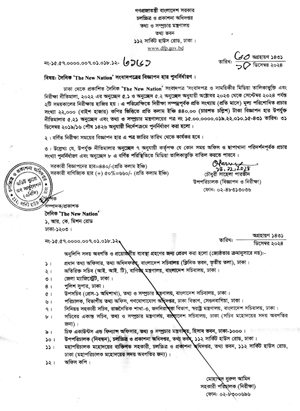Sheikh Arif Bulbon :
Built by the Mughals from fifteenth century onwards,
Old Dhaka developed as the provincial centre of commerce for the Eastern Bengal. In spite of the British colonisation, this ‘nature’ remained essentially the same for centuries. With the advent of modernity all that is changing. Dhaka is now a capital city and the pressures of urbanisation and development
are resulting in the loss of a unique way of life.
Commerce has always been the heart of Old Dhaka but the current level of commercialisation cannot be contained within its confines. As a result, marginalisation and decay have become the order of the day. The lives and structures keep falling apart. Viewed from the dominant paradigm Old Dhaka has come completely irrelevant and perhaps even unwanted.
The 33rd solo painting exhibition titled ‘Organic City’ by artist Kazi Salahuddin Ahmed is being held at La Galerie of the Alliance Française de Dhaka (AFD) in the city’s Dhanmondi area now. There are around 39 artworks and one installation in the exhibition, which was inaugurated on October 13. Most
of the artworks of the artist were done in oil on paper.
Eminent sculptor Prof Hamiduzzaman Khan, architect Jalal Ahmed and artist Mustafa Zaman, among others, were
present at the inauguration of the exhibition.
Kazi Salahuddin Ahmed is a very prolific artist who has realised his first exhibition in 1987. He has already participated in many group exhibitions and carried out 32nd solo
exhibitions in Bangladesh and abroad, particularly in France, the United States, India, Pakistan, the United Kingdom,
China, Japan, Australia, Nepal, Iran and in Yugoslavia.
The main objective of Kazi Salahuddin Ahmed’s work is
to break the stereotypes constructed by this dominant
paradigm. He believes that Old Dhaka has much to offer especially in terms of the advent of individualism that has wreaked havoc in our society. For his 33rd solo exhibition, the artist has worked on the city of Old Dhaka. His objective is to depict an organic city. For this, he has realised aerial views of Dhaka as well as faces. The bonding and the togetherness, neighbourhood and belongingness, all these can substantially provide in the highly competitive environment of the present day. His work is, therefore, focused to reinvent the old city.
The forms, composition, colours and the structures are reflective of this central ideology. It incorporates elements from his childhood memories, aspects of the daily existence and
is blended together to reflect the fantastic rhythm, music, smell and texture of the Old Dhaka.
The exhibition will continue till October 31.n
Built by the Mughals from fifteenth century onwards,
Old Dhaka developed as the provincial centre of commerce for the Eastern Bengal. In spite of the British colonisation, this ‘nature’ remained essentially the same for centuries. With the advent of modernity all that is changing. Dhaka is now a capital city and the pressures of urbanisation and development
are resulting in the loss of a unique way of life.
Commerce has always been the heart of Old Dhaka but the current level of commercialisation cannot be contained within its confines. As a result, marginalisation and decay have become the order of the day. The lives and structures keep falling apart. Viewed from the dominant paradigm Old Dhaka has come completely irrelevant and perhaps even unwanted.
The 33rd solo painting exhibition titled ‘Organic City’ by artist Kazi Salahuddin Ahmed is being held at La Galerie of the Alliance Française de Dhaka (AFD) in the city’s Dhanmondi area now. There are around 39 artworks and one installation in the exhibition, which was inaugurated on October 13. Most
of the artworks of the artist were done in oil on paper.
Eminent sculptor Prof Hamiduzzaman Khan, architect Jalal Ahmed and artist Mustafa Zaman, among others, were
present at the inauguration of the exhibition.
Kazi Salahuddin Ahmed is a very prolific artist who has realised his first exhibition in 1987. He has already participated in many group exhibitions and carried out 32nd solo
exhibitions in Bangladesh and abroad, particularly in France, the United States, India, Pakistan, the United Kingdom,
China, Japan, Australia, Nepal, Iran and in Yugoslavia.
The main objective of Kazi Salahuddin Ahmed’s work is
to break the stereotypes constructed by this dominant
paradigm. He believes that Old Dhaka has much to offer especially in terms of the advent of individualism that has wreaked havoc in our society. For his 33rd solo exhibition, the artist has worked on the city of Old Dhaka. His objective is to depict an organic city. For this, he has realised aerial views of Dhaka as well as faces. The bonding and the togetherness, neighbourhood and belongingness, all these can substantially provide in the highly competitive environment of the present day. His work is, therefore, focused to reinvent the old city.
The forms, composition, colours and the structures are reflective of this central ideology. It incorporates elements from his childhood memories, aspects of the daily existence and
is blended together to reflect the fantastic rhythm, music, smell and texture of the Old Dhaka.
The exhibition will continue till October 31.n




